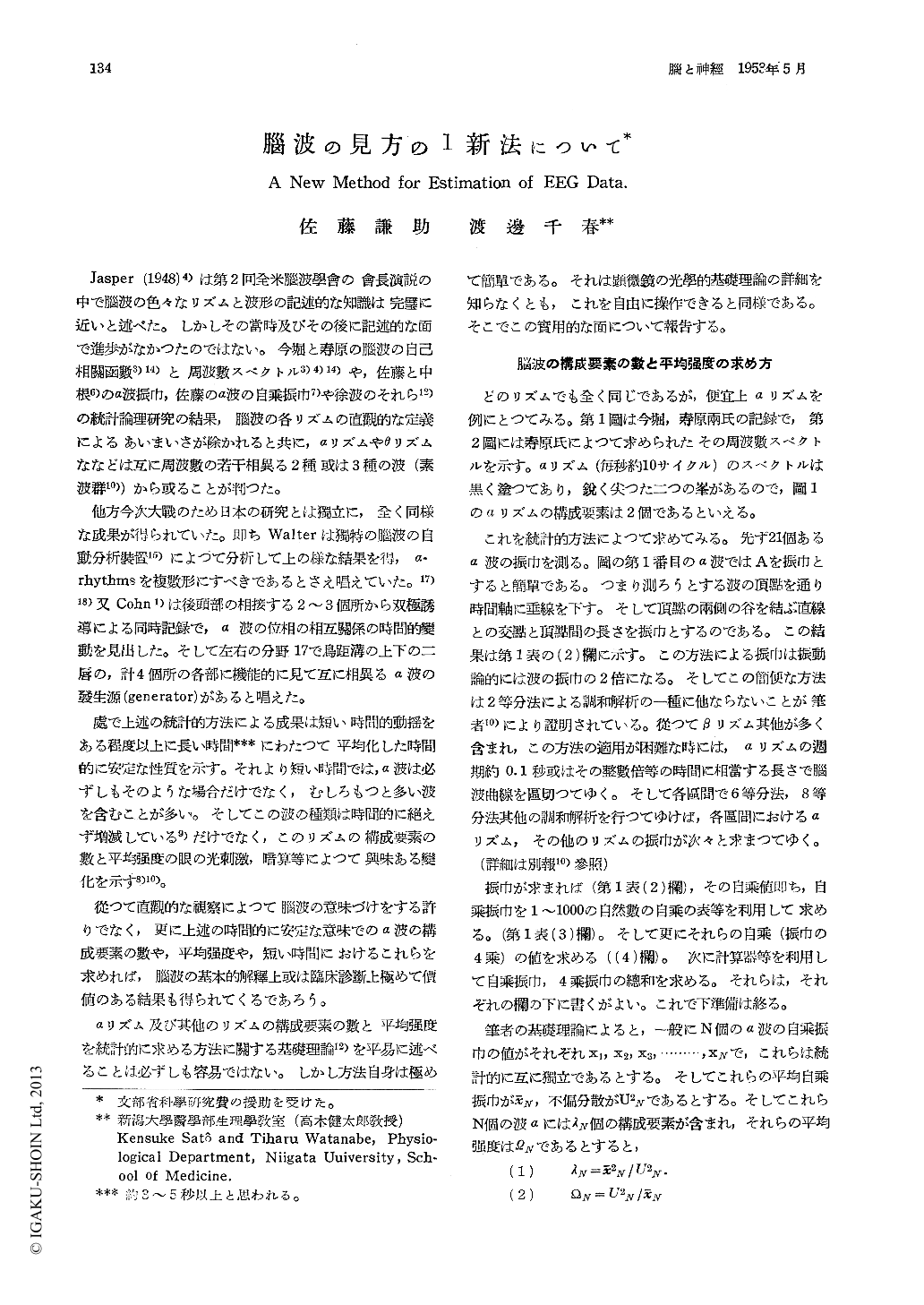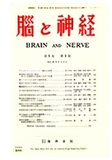Japanese
English
- 有料閲覧
- Abstract 文献概要
- 1ページ目 Look Inside
Jasper(1948)4)は第2回全米腦波學會の會長演説の中で腦波の色々なリズムと波形の記述的な知識は完璧に近いと述べた。しかしその當時及びその後に記述的な面で進歩がなかつたのではない。今堀と寿原の腦波の自己相關函數3)14)と周波數スペクトル3)4)14)や,佐藤と中根6)のα波振巾,佐藤のα波の自乗振巾7)や徐波のそれら12)の統計論理研究の結果,腦波の各リズムの直觀的な定義によるあいまいさが除かれると共に,αリズムやθリズムななどは互に周波數の若干相異る2種或は3種の波(素波群10)から或ることが判つた。
他方今次大戰のため日本の研究とは獨立に,全く同様な成果が得られていた。即ちWalterは獨特の腦波の自動分析装置15)によつて分析して上の様な結果を得,α-rhythmsを複數形にすべきであるとさえ唱えていた。17)18)又Cohn1)は後頭部の相接する2〜3個所から双極誘導による同時記録で,α波の位相の相互關係の時間的變動を見出した。そして左右の分野17で鳥距溝の上下の二唇の,計4個所の各部に機能的に見て互に相異るα波の發生源(generator)があると唱えた。
The number of the components λN in alpha rhythms and their mean intensity ΩN are
(1) λN=xN2/UN2 and (2) ΩN=UN2/xN respectively, where xN and UN2 are the mean square amplitude and unbiased dispersion of N successive alpha waves respectively (see (3) and (4) in text).
When the subject being relaxed, large and regular alpha rhythms may be produced, so the value of xN and U2N may be large and less respectively. Thus one may easily recognize from (1) and (2) that the larger λN and the lesser ΩN are, the lower the level of brain cortex activity may be suggested and conversely.
A simple practical method for measuring the amplitude of alpha waves is shown by A in Fig. 1. And that for obtaining the values of λ21=2.1 and Ω21=29.5mm2 from twenty one successive alpha waves in Fig.1 are shown in Table 1.
It is shown in the frequency spectrum (Fig. 2) that the above alpha rhythms are composed of two components. This result coincides with λ21=2.1.
From (1) and (2) , the relation.
(6) logxN=logλN+logΩN
is easily obtained. In many alpha rhythms, the points (logλN, logΩN) lie on a straight line or a band having the gradient of fourty five degrees, because of little fluctuation of xN. The more eminent the fluctuation of xN is, the broader this band is. And the lesser xN is, the lower the location of the line or band takes.
In some alpha rhythms (for instance, Fig. 3, 4 and 5 in text), this "logλN-logΩN line (band)" separate in two or more ones, since xN fluctuate in different two or more ranges. This fact may suggest the separation of cortex activity in two or more levels.
The point (logλN, logΩN) located on the right lower part of "the logλN-lygΩN line (band)" may suggest the low level of cortex activity and conversely, since its location shows large λN and les ΩN and conversely.
The range of the fluctuation of λN and ΩN are represented in the length of this line (band).
Thus the number, breadth, lenghth and location of "the logλN?logΩN line (band)" may be significant for the new estimation of EEG data.
The above new method may be applicable not only to alpha rhythms, but also to delta, theta and beta rhythms in similar way.

Copyright © 1953, Igaku-Shoin Ltd. All rights reserved.


